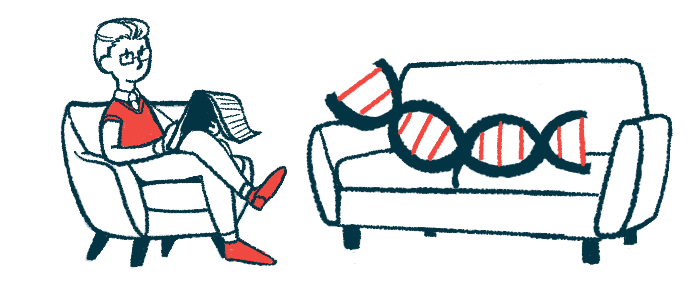RESTORE data indicate real-world benefits of Zolgensma for SMA

Real-world treatment with Zolgensma (onasemnogene abeparvovec-xioi) was associated with motor and survival benefits for people with spinal muscular atrophy (SMA), data from the RESTORE patient registry shows.
Greater motor improvements and a better safety profile were generally seen in those who’d been diagnosed via newborn screening (NBS) over those clinically diagnosed based on SMA symptoms.
“Treatment with [Zolgensma] monotherapy was transformative for this vulnerable patient population,” the researchers wrote in “Real-World Outcomes in Patients with Spinal Muscular Atrophy Treated with Onasemnogene Abeparvovec Monotherapy: Findings from the RESTORE Registry,” which was published in the Journal of Neuromuscular Diseases. “Further analyses of the RESTORE real-world data will be conducted for various patient populations to increase our understanding of SMA in the era of DMTs [disease-modifying therapies].” The study was sponsored by Novartis, which markets Zolgensma and sponsors the RESTORE registry.
Three DMTs have been approved for SMA in the last decade and all seek to boost production of SMN, the protein that patients lack due to mutations in the main SMN-producing gene, SMN1.
A gene therapy, Zolgensma provides a working copy of SMN1. Clinical trials have demonstrated its ability to improve motor function, enable motor milestones to be achieved, preserve feeding and breathing abilities, and prolong survival.
Recommended Reading

Antibody levels affecting Zolgensma transient in SMA children
Treating SMA with Zolgensma
Clinical trials may not fully reflect the real-world impacts of a therapy, however, since the SMA population tends to have a more variable disease presentation. This means larger, long-term observational studies are needed to learn how DMTs affect patients relative to the natural course of disease, the researchers said.
RESTORE (NCT04174157) is a real-world, observational patient registry that’s tracking outcomes for up to 15 years and seeks to capture responses to DMTs that weren’t available in earlier registries.
Here, the scientists described clinical outcomes for 168 registry participants who’d been treated with Zolgensma as of May 2022 and hadn’t received any prior SMA therapies.
The patients were diagnosed with SMA at a median age of 1 month. About half (48.8%) were asymptomatic at their diagnosis, with 58.3% diagnosed via NBS.
Zolgensma was given at a median age of 3 months and the patients were followed in the registry for a mean of a little over a year and up to 37 months (over three years) after treatment.
Survival without the need for breathing tube placement (tracheostomy) was distinctly improved from the natural course of disease. Survival after a year was 93.7% for patients with two copies of the “backup” SMN-producing gene SMN2 and 100% for those with three copies.
NBS vs. clinical diagnosis
Among those with two SMN2 copies, survival after one and two years was greater for those diagnosed via NBS (100%) over those with a clinical diagnosis (87.9% and 81.7%).
All Zolgensma-treated patients achieved motor milestones after therapy, with those diagnosed through NBS achieving them at an earlier age than the clinically diagnosed patients. For example, those children achieved the first milestone of sitting independently for at least 3o seconds by a median of 10.63 months compared to about 20 months in the clinically diagnosed group.
While no clinically diagnosed patient achieved the ability to walk independently during the follow-up, it was achieved by 16 of 32 NBS patients at a median age of 15.4 months.
For those with evaluable data, motor function, as assessed by the Children’s Hospital of Philadelphia Infant Test of Neuromuscular Disorders (CHOP-INTEND), Hammersmith Functional Motor Scale (HFMSE), or Hammersmith Infant Neurological Examination (HINE-2), generally improved after Zolgensma.
Those diagnosed by NBS saw higher CHOP-INTEND scores after treatment and greater improvements in HINE-2 and HFMSE than clinically diagnosed patients.
A year after Zolgensma, nearly all the SMA patients (96.6%) were fed exclusively by mouth.
“Generally, patients with SMA who received [Zolgensma] derived benefit from treatment,” the researchers wrote. “These findings further validate substantial improvement and outcome gains versus the natural history of SMA.”
The data also confirm previous studies that found patients diagnosed by NBS see better outcomes. “These results support the benefits of early identification and treatment of patients with SMA,” the researchers said.
Side effects were generally consistent with the known safety profile of Zolgensma. Fewer patients diagnosed with NBS had side effects (36.1%) or serious side effects (9.3%) compared to those who were clinically diagnosed, 65.7% of whom had a side effect and 31.4% had a serious one.
Rates of side effects were also higher in older and heavier patients, which could be because Zolgensma is given at a weight-based dose where older and heavier patients will get higher exposure to the therapy.
“However, current data are insufficient to draw a firm conclusion,” the researchers wrote. “Additional studies and real-world data are needed.”
RESTORE continues to enroll new patients at sites globally.
The post RESTORE data indicate real-world benefits of Zolgensma for SMA appeared first on SMA News Today.



